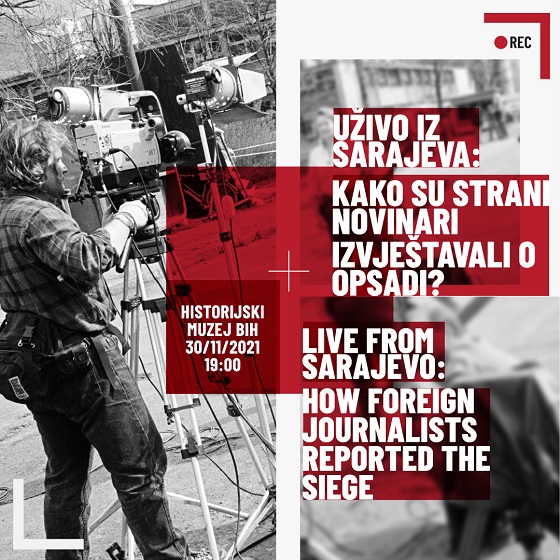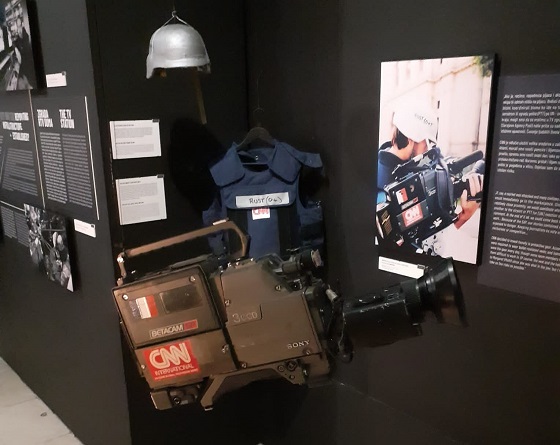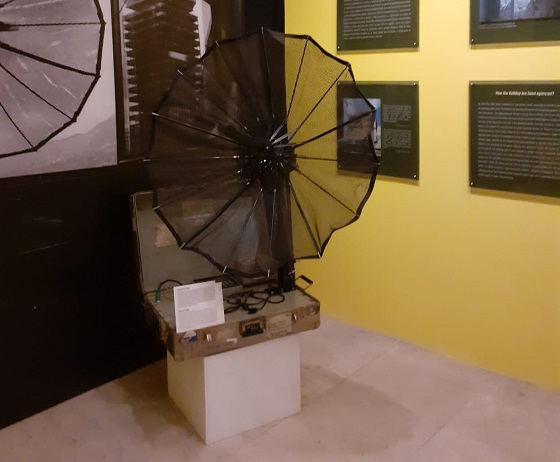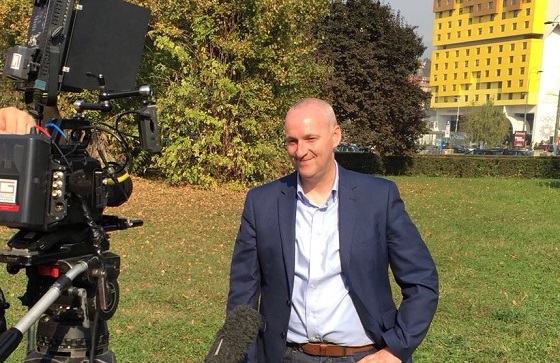A renowned expert in Balkan history has helped create an exhibition commemorating the longest siege in modern warfare and the international media who broadcast the story around the world.
Kenneth Morrison, Professor of History and Chair in Modern South East European History, at De Montfort University Leicester (DMU), worked with Elma Hodzic, curator at the History Museum of Bosnia and Herzegovina, to create ‘Live from Sarajevo’ in the Bosnian capital.

The project, funded by the UK Research and Innovation’s Global Research Challenges Fund (GCRF), contains artefacts showing how journalists reported on the Siege of Sarajevo and includes items donated by reporters who were covering the war in Bosnia from 1992 to 1995.
The exhibition is based on Professor Morrison’s book ‘Reporting the Siege of Sarajevo’, which he co-authored with the photojournalist and academic Dr Paul Lowe.
It is part of a wider museum exhibition called ‘Besieged Sarajevo’ which includes hundreds of items donated by citizens at the end of the siege of the city. It includes numerous everyday objects that were repurposed during the siege, such as machines that were crudely built by hand to generate electricity and United Nations plastic sheeting citizens used to cover windows.

A CNN camera, flack jacket and helmet worn by a journalist during the siege
The new section includes journalists’ flak jackets, helmets, laptops, tape recorders, television cameras, satellite equipment and other items donated by foreign correspondents who covered the siege. It is underpinned by a basic narrative derived from the book explaining how the siege was reported.
The ‘Live from Sarajevo’ exhibition has been designed to continue the dialogue among the generations affected by, and those who came after, the war. The 30th anniversary of the beginning of the siege will be later this year.
“Not everyone will read a 100,000-word academic book about the reporting of the siege, so the exhibition was a way of conveying an interesting and complex story in an engaging and accessible way”, Professor Morrison said.
RELATED NEWS
DMU expert publishes book 'The Siege of Sarajevo'
House of Lords calls on professor's Balkans expertise
Professor appears on TV series 'War Hotels'
“In the museum, people can walk around for 15 to 30 minutes and see and read enough to help them understand what happened in the Balkans and learn about the siege of Sarajevo. By displaying exhibits and documents relevant to that period we reach a far bigger audience.”
Ms Hodzic said: “The 'Besieged Sarajevo' exhibition deals with various aspects of the siege that are presented through the perspective of ordinary citizens trapped in a conflict and includes hundreds of items donated by citizens at the end of the war.
“It is a platform for dialogue about the past, an open museum laboratory with various micro-units. One such unit is the new 'Live from Sarajevo' exhibition, which brings an international perspective to the story of the 1992-96 siege.

Satellite equipment used for broadcasting news from the siege
“This exhibition shows how the tragedy of one city was reported and how the story was disseminated through the media. It warns of what is tragic in war, and at the same time encourages us to work every day to build peace through the museum space and the stories held within.”
Prof Morrison and the History Museum are also involved in an an AHRC-funded project to build a network of ‘Peace Museums’ that deal with post-conflict legacies. Two international conferences for the project will take place in Sarajevo in 2022 and 2023.
In addition, Prof Morrison, Ms Hodzic and colleagues at the History Museum are also hoping to raise funds to redevelop and rebuild the ‘Besieged Sarajevo’ exhibition in the coming years.

Professor Morrison filming outside the former Holiday Inn, Sarajevo
Prof Morrison says the museum plays an important role in ensuring younger generations learn lessons from the war in Bosnia & Herzegovina, which left more than 100,000 dead and displaced more than two million people.
In the past six months, tensions have risen again in the country and many are fearful of what the future holds.
Ms Hodzic added: “The current situation in Bosnia and Herzegovina shows how important history is in helping to establish a healthy political environment - and that is true today more than ever.”
Posted on Wednesday 26 January 2022